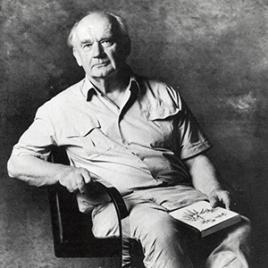
Sir Giles Gilbert Scott was a British architect known for his work on the New Bodleian Library, Cambridge University Library, Lady Margaret Hall, Oxford, Battersea Power Station, Liverpool Cathedral, and designing the iconic red telephone box.

Charles Henry Holden was an English architect best known for designing many London Underground stations during the 1920s and 1930s, the Underground Electric Railways Company of London's headquarters at 55 Broadway, for the University of London's Senate House and for Bristol Central Library. He created many war cemeteries in Belgium and northern France for the Imperial War Graves Commission.
The year 1963 in architecture involved some significant architectural events and new buildings.
The year 1887 in architecture involved some significant architectural events and new buildings.

The Royal Institute of British Architects (RIBA) is a professional body for architects primarily in the United Kingdom, but also internationally, founded for the advancement of architecture under its royal charter granted in 1837, three supplemental charters and a new charter granted in 1971.
The Master of Architecture is a professional degree in architecture qualifying the graduate to move through the various stages of professional accreditation that result in receiving a license.

Built in 1716–17 as a charity school, Bluecoat Chambers in School Lane is the oldest surviving building in central Liverpool, England. Following the Liverpool Blue Coat School's move to another site in 1906, the building was rented from 1907 onwards by the Sandon Studios Society. Based on the presence of this art society and the subsequent formation of the Bluecoat Society of Arts in 1927, the successor organisation laid claim to being the oldest arts centre in Great Britain, now called the Bluecoat.

Herbert James Rowse was an English architect. Born in Liverpool and a student of Charles Reilly at the Liverpool University School of Architecture, Rowse opened an architectural practice in the city. Although he designed major buildings for other cities, Rowse is best known for his work in Liverpool, including India Buildings, the entrances to and ventilation towers of the Mersey Tunnel ("Queensway"), and the Philharmonic Hall. He designed in a range of styles, from neoclassical to Art Deco, generally with a strong American influence.

Sir Charles Herbert Reilly was an English architect and teacher. After training in two architectural practices in London he took up a part-time lectureship at the University of London in 1900, and from 1904 to 1933 he headed the University of Liverpool School of Architecture, which became world-famous under his leadership. He was largely responsible for establishing university training of architects as an alternative to the old system of apprenticeship.

William Graham Holford, Baron Holford, was a British architect and town planner.
Xi’an Jiaotong–Liverpool University is a private university in Suzhou, Jiangsu, China. It was founded in 2006 as a joint venture between the University of Liverpool and Xi'an Jiaotong University.
After nearly a century of endeavour and negotiation which had been led by the Royal Institute of British Architects, a statutory Board of Architectural Education was formed under the Architects (Registration) Act 1931. For the purposes of constituting the Board of Architectural Education the Act included a list of Schools of Architecture in the United Kingdom. The statutory Board was abolished in the 1990s, and when the Architects Act 1997 repealed the 1931 Act the statutory list of Schools of Architecture went with it.
Percy Edwin Alan Johnson-Marshall CMG was a British urban designer, regional planner and academic. Born in India, he was educated at Liverpool University, and worked initially with local authorities in the south of England. In 1959, he took a post as senior lecturer at the University of Edinburgh, and was appointed Professor of Urban Design and Regional Planning in 1964.
William Crabtree (1905–1991) was an English architect. His reputation rests mainly on his Peter Jones department store, Sloane Square and King's Road, Chelsea, London (1932–37), designed for John Spedan Lewis (1885–1963), the founder of the John Lewis Partnership.

High Victorian Gothic was an eclectic architectural style and movement during the mid-late 19th century. It is seen by architectural historians as either a sub-style of the broader Gothic Revival style, or a separate style in its own right.

Sir Peter Faulkner Shepheard FRTPI FILA was a British architect and landscape architect.

Charles Herbert Aslin CBE was a British architect.
Sidney Colwyn Foulkes OBE FRIBA FILA AMTPI (1884-1971) was a Welsh architect, especially known for his architectural designs in Colwyn Bay, cinemas and council estates in North Wales. He was one of the first industrial landscape architects in Britain.
Charles William Hutton FRIBA was an architect and former master of the Art Workers' Guild, who was known best for his work with Charles Holden on the London Underground. Arnos Grove tube station and the former Murphy Radio factory in Welwyn Garden City are regarded as some of his best work.
George Checkley was a New Zealand-born architect and academic, who predominantly worked in the UK. He is known for being among the architects to introduce Modernist buildings to the UK, particularly with two of his houses in Cambridge – the White House (1930–31) and Thurso, now known as Willow House (1932–33). Willow House has been described as "close to being a text-book demonstration of Le Corbusier's architectural principles". After teaching at the University of Cambridge's School of Architecture (1925–34), Checkley successively headed the Schools of Architecture at Regent Street Polytechnic (1934–37) and the University of Nottingham (1937–48), where he also established a School of Town and County Planning.












